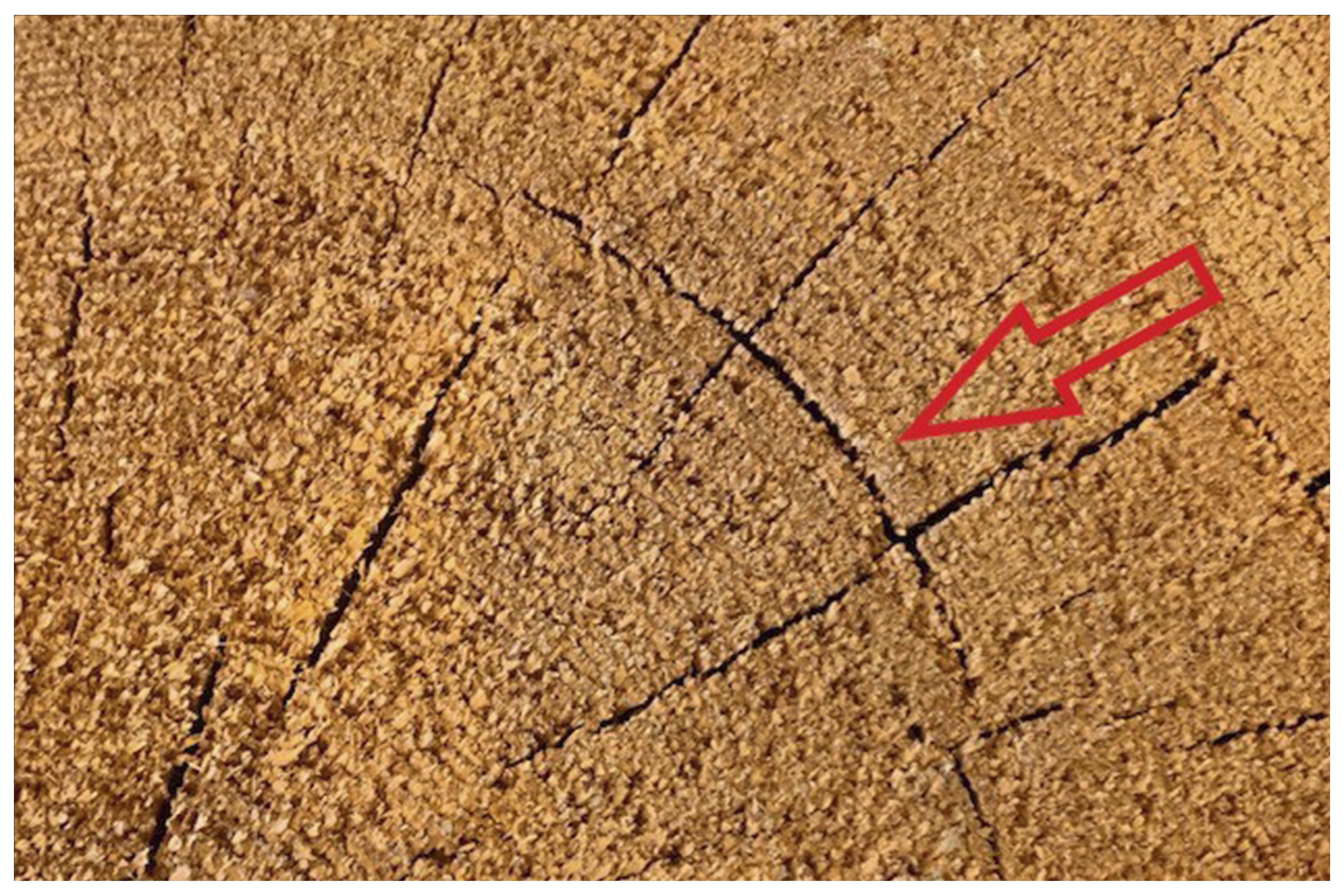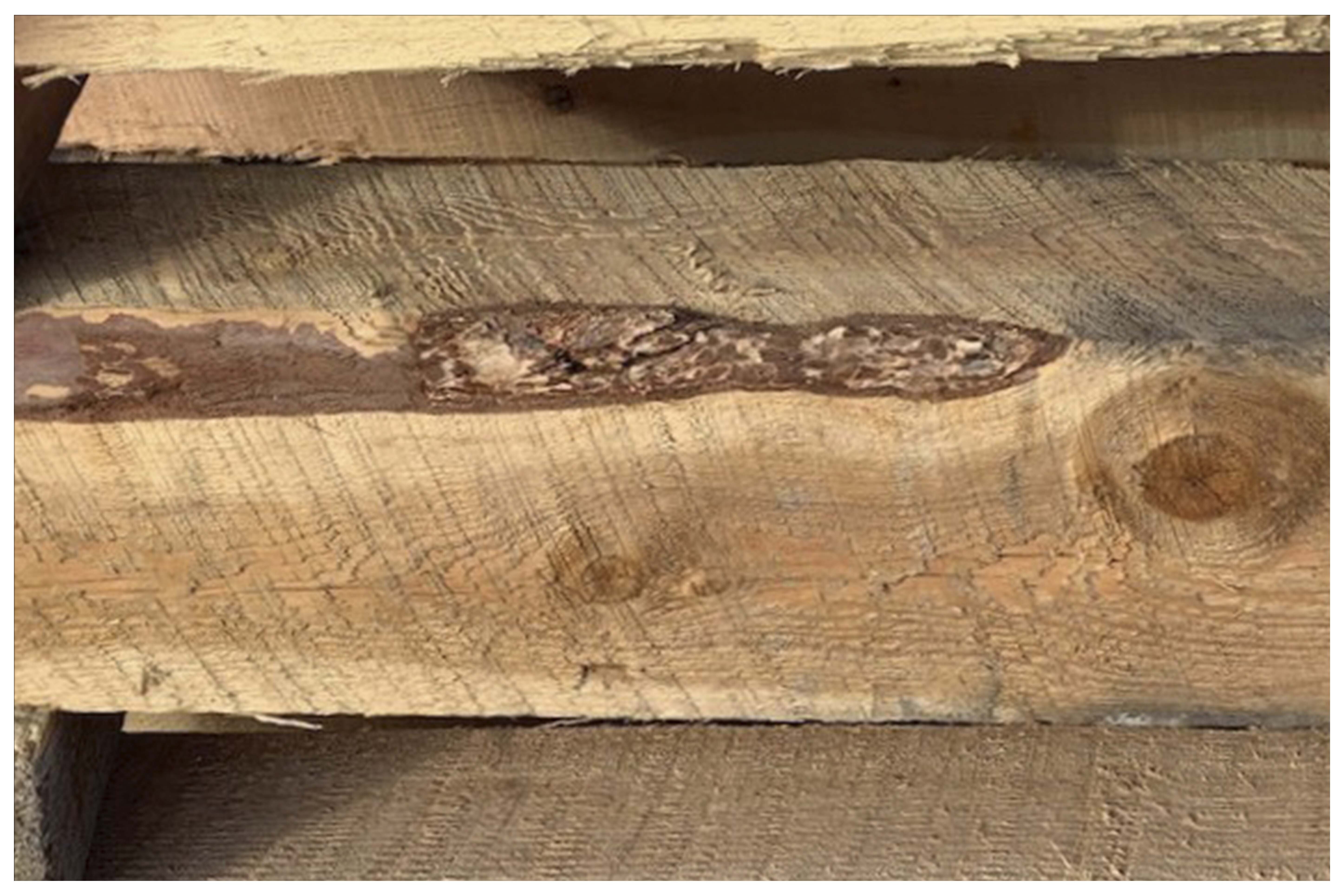At Marks Lumber, we look carefully at each timber, studying it for defects and characteristics that help us decide how it will be graded for use. While a large number of defects can have a negative impact on the grade of the timber, some defects add distinctive character to wood that people love. It's important to understand which defects affect appearance only, and which ones can impact the structural integrity.
All of our timbers are graded to the Western Wood Products Association Standards, sorted, and inventoried based on their appearance and the number of defects they display. While there are many things we look for when grading timbers, here are some of the most common defects that we consider when categorizing our circle sawn timbers.

Split
A split is a separation that spans from one face of the timber to another, caused by the tearing apart of the wood cells. Splits are a more severe form of checking and can threaten a timber's structural integrity.
Checking
Checking is the separation of the wood that occurs lengthwise across the growth rings. Checking normally occurs in the drying or "seasoning" process as the sapwood shrinks around the heartwood. While it may look like a crack, checking typically does not affect the structural integrity and can occur on even the best quality timbers. Many people actually enjoy the look of checking because it adds to the rustic look of our circle sawn timbers!

Shake
Shake refers to a lengthwise separation of the wood that goes between or along the growth rings. Shake often occurs in standing trees and can be caused by external stressors such as wind, temperature, and fungi. Unlike checking, shake can affect the timbers' strength, depending on where it is located and if the shake goes through the length of the timber. If the shake is severe, timbers will be downgraded accordingly. While checking creates a distinctive rustic look, shake, when close enough to the edges, can make the wood appear like it is peeling away from the center.

Wane
Wane refers to any lack of wood, with or without bark, on the timber's edges or corners. At Marks Lumber, timbers with an excessive amount of wane will often get downgraded to Grade #2 strictly due to their appearance.
Timber defects are natural and part of the unique beauty of the wood. Look closely, and you can find these characteristics on every timber, even those of the highest quality. However, while it may not look like it, many of these defects do not affect the timber's structural integrity when they occur as limited by the grade book. At Marks Lumber, our circle sawn timbers are graded for both appearance and strength, providing you with top-quality lumber with a perfect rustic finish!
*This post draws heavily from the Western Wood Products Association's Western Lumber Grading Rules.
